Mohammadreza Sabzehali
Energy-Environment evaluation and Forecast of a Novel Regenerative turboshaft engine combine cycle with DNN application
Sep 24, 2022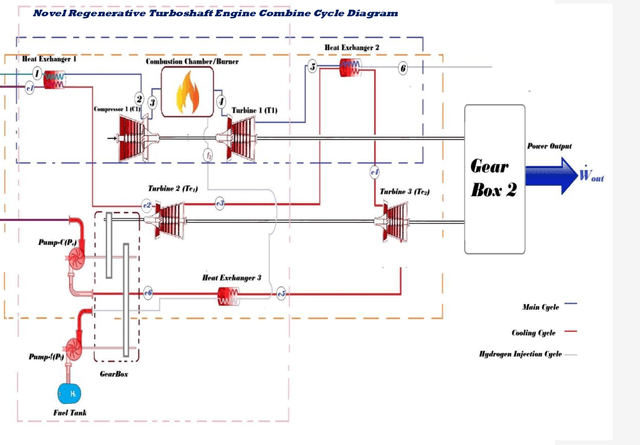
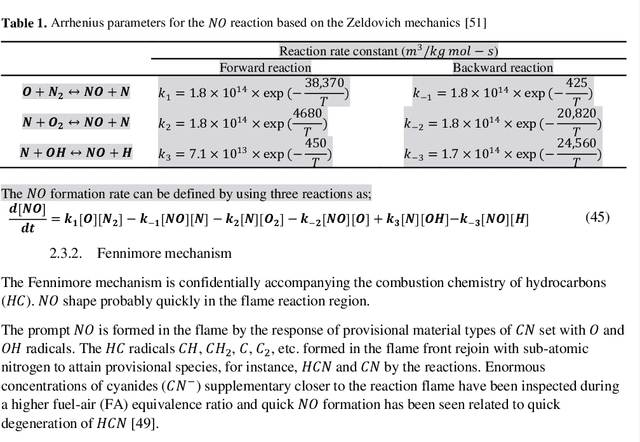
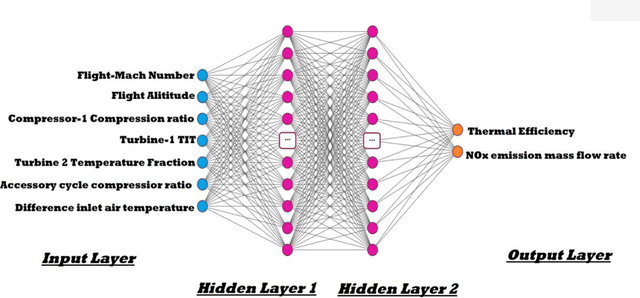
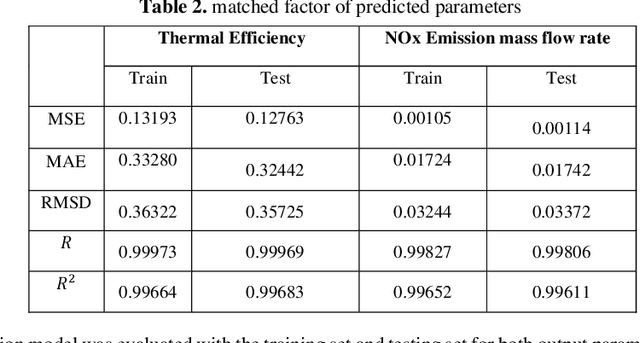
Abstract:In this integrated study, a turboshaft engine was evaluated by adding inlet air cooling and regenerative cooling based on energy-environment analysis. First, impacts of flight-Mach number, flight altitude, the compression ratio of compressor-1 in the main cycle, the turbine inlet temperature of turbine-1 in the main cycle, temperature fraction of turbine-2, the compression ratio of the accessory cycle, and inlet air temperature variation in inlet air cooling system on some functional performance parameters of Regenerative turboshaft engine cycle equipped with inlet air cooling system such as power-specific fuel consumption, Power output, thermal efficiency, and mass flow rate of Nitride oxides (NOx) including NO and NO2 has been investigated via using hydrogen as fuel working. Consequently, based on the analysis, a model was developed to predict the energy-environment performance of the Regenerative turboshaft engine cycle equipped with a cooling air cooling system based on a deep neural network (DNN) with 2 hidden layers with 625 neurons for each hidden layer. The model proposed to predict the amount of thermal efficiency and the mass flow rate of nitride oxide (NOx) containing NO and NO2. The results demonstrated the accuracy of the integrated DNN model with the proper amount of the MSE, MAE, and RMSD cost function for both predicted outputs to validate both testing and training data. Also, R and R^2 are noticeably calculated very close to 1 for both thermal Efficiency and NOx emission mass flow rate for both validations of thermal efficiency and NOx emission mass flow rate prediction values with its training and its testing data.
Prediction of the energy and exergy performance of F135 PW100 turbofan engine via deep learning
Aug 24, 2022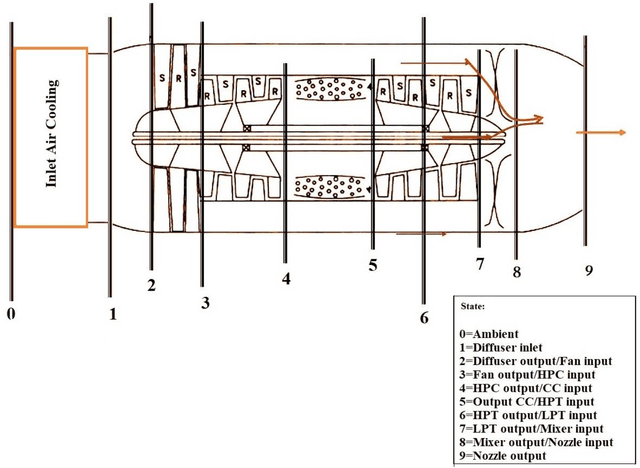
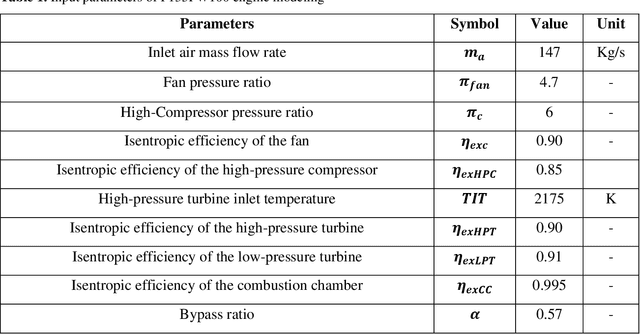
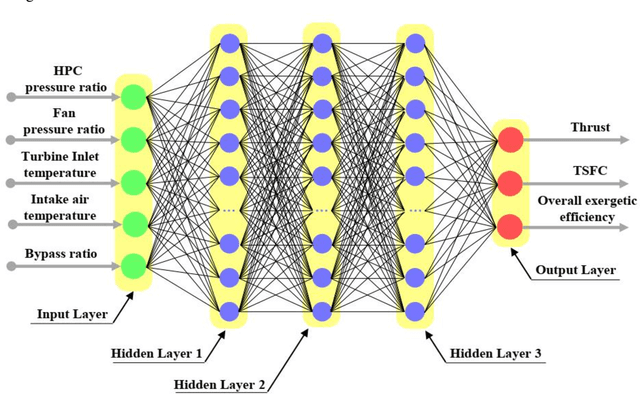

Abstract:In the present study, the effects of flight-Mach number, flight altitude, fuel types, and intake air temperature on thrust specific fuel consumption, thrust, intake air mass flow rate, thermal and propulsive efficiecies, as well as the exergetic efficiency and the exergy destruction rate in F135 PW100 engine are investigated. Based on the results obtained in the first phase, to model the thermodynamic performance of the aforementioned engine cycle, Flight-Mach number and flight altitude are considered to be 2.5 and 30,000 m, respectively; due to the operational advantage of supersonic flying at high altitude flight conditions, and the higher thrust of hydrogen fuel. Accordingly, in the second phase, taking into account the mentioned flight conditions, an intelligent model has been obtained to predict output parameters (i.e., thrust, thrust specific fuel consumption, and overall exergetic efficiency) using the deep learning method. In the attained deep neural model, the pressure ratio of the high-pressure turbine, fan pressure ratio, turbine inlet temperature, intake air temperature, and bypass ratio are considered input parameters. The provided datasets are randomly divided into two sets: the first one contains 6079 samples for model training and the second set contains 1520 samples for testing. In particular, the Adam optimization algorithm, the cost function of the mean square error, and the active function of rectified linear unit are used to train the network. The results show that the error percentage of the deep neural model is equal to 5.02%, 1.43%, and 2.92% to predict thrust, thrust specific fuel consumption, and overall exergetic efficiency, respectively, which indicates the success of the attained model in estimating the output parameters of the present problem.
* 41 pages, 13 figures, 4 tables
Energy-Exergy Analysis and Optimal Design of a Hydrogen Turbofan Engine
Aug 14, 2022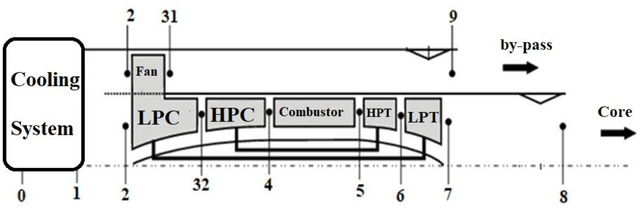
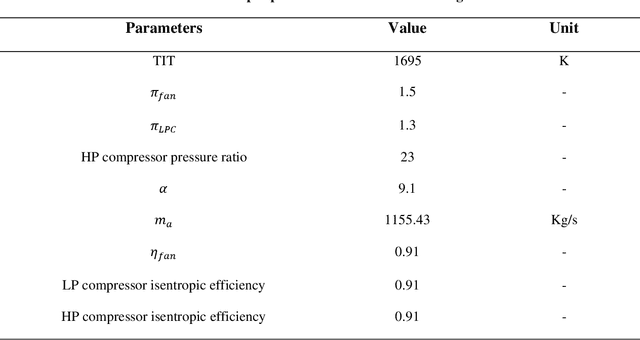
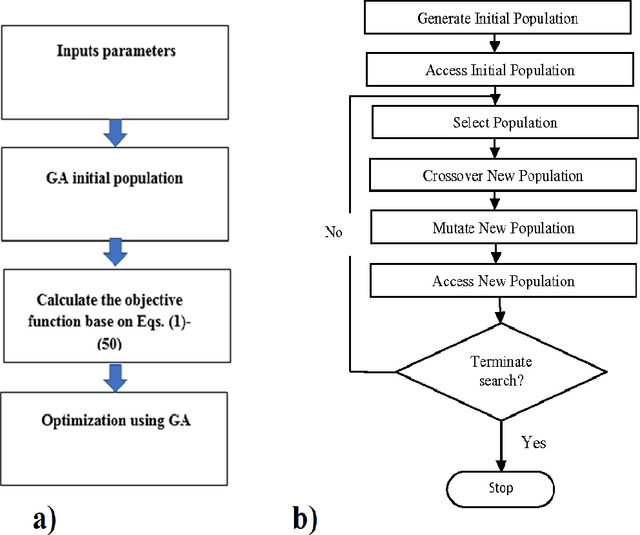

Abstract:In this study, the effect of inlet air cooling and fuel type on the performance parameters of thrust-specific fuel consumption (TSFC), thermal and exergetic efficiencies, entropy generation rate, and Nitrogen oxide emission intensity index (SNOx) of the GENX 1B70 engine is analyzed in two states of take-off and on design. The results show that with a 20-degree delicious reduction in inlet air temperature on design conditions and JP10 fuel usage, the thermal efficiency and entropy generation rate, thrust and fuel mass flow rate, and TSFC of the engine increase by 1.85 percent, 16.51 percent, 11.76 percent, 10.53 percent, and 2.15 percent and SNOx and exergetic efficiency decrease by 2.11 percent and 26.60 percent, respectively. Also, optimization of the GENX 1B70 engine cycle as hydrogen fuel usage with three separate objective functions: thrust maximization, thermal efficiency maximization, and propulsive efficiency maximization on design point condition was performed based on the Genetic algorithm. Based on the economic approach and exero-environmental, the best cycles from the optimal states were selected using the TOPSIS algorithm. In on design conditions, entropy generation rate, nitrogen oxide production rate, and TSFC for the chosen cycle based on the economic approach +18.89 percent, +10.01 percent, and -0.21percent, respectively, and based on the exero-environmental approach -54.03percent, -42.02percent, and +21.44percent change compared to the base engine, respectively.
 Add to Chrome
Add to Chrome Add to Firefox
Add to Firefox Add to Edge
Add to Edge